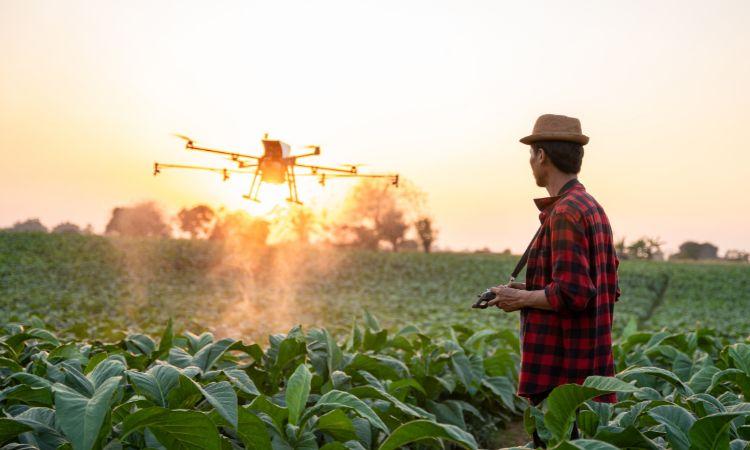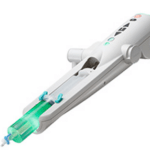The global agricultural adjuvants market size is expected to grow at a CAGR of 5.8% during the period 2023-2028. This statistic alone underscores the significance of agricultural adjuvants in modern farming practices. In an era where sustainable and efficient crop protection is paramount, adjuvants have emerged as indispensable tools for farmers. This blog post delves deep into the world of adjuvants and their pivotal role in safeguarding crops while minimizing environmental impact.
Understanding Crop Protection
Crop protection is the bedrock of agriculture. It encompasses all the measures taken to safeguard crops from pests, diseases, and weeds, ensuring bountiful harvests. Traditionally, crop protection involved a combination of physical, biological, and chemical methods. While each of these methods has its place, the synergy of adjuvants with chemical pesticides has opened up new horizons in crop protection.
Introduction to Adjuvants
What Are Agricultural Adjuvants?
Agricultural adjuvants are substances or additives used to enhance the effectiveness of pesticides and other crop protection products. They come in various forms, including surfactants, oils, and spreader-stickers. Adjuvants work by improving the distribution, adhesion, and retention of pesticides on plant surfaces. This allows for better coverage of target pests and diseases, ultimately increasing the efficacy of the applied chemicals.
How Adjuvants Enhance Crop Protection
The primary function of adjuvants is to make pesticides work better. They achieve this by:
-
Increasing Wetting and Spreading: Adjuvants reduce the surface tension of pesticide sprays, ensuring they spread evenly over plant surfaces, even on waxy leaves.
-
Enhancing Penetration: Adjuvants help pesticides penetrate plant tissues, making them more effective against pests and diseases that hide within the plant.
-
Reducing Drift: Adjuvants minimize spray drift, which not only saves money but also reduces the risk of unintended environmental contamination.
-
Improving Rainfastness: Many adjuvants enhance the rainfastness of pesticides, ensuring that they remain effective even after exposure to rainfall.
Enhancing Pesticide Effectiveness
One of the most notable benefits of using adjuvants is the enhancement of pesticide effectiveness. Pesticides are a significant investment for farmers, and maximizing their impact is essential for cost-effectiveness and crop protection. Here’s how adjuvants contribute to this goal:
Synergy between Adjuvants and Pesticides
Adjuvants complement the action of pesticides. They can turn a marginally effective pesticide into a highly efficient one. This synergy is especially crucial when dealing with resistant pests or challenging environmental conditions.
Improved Distribution and Adhesion
Adjuvants ensure that pesticides are distributed uniformly on plant surfaces. This prevents pests and diseases from finding refuge in untreated areas. Additionally, adjuvants help pesticides adhere to plant surfaces, preventing wash-off and increasing residual effectiveness.
Real-world Examples
Let’s consider an example: a farmer facing a severe aphid infestation in their soybean field. They decide to use a specific insecticide, but without an adjuvant, the results are lackluster. However, when they add an appropriate adjuvant to the mix, the pesticide spreads evenly across the leaves, and adhesion improves. As a result, the aphid population is effectively controlled, leading to a healthier soybean crop.
Reducing Environmental Impact
While effective crop protection is crucial, minimizing the environmental impact of agricultural practices is equally important. Adjuvants play a vital role in achieving this balance.
Minimizing Pesticide Doses
One of the most significant environmental benefits of using adjuvants is the ability to reduce pesticide doses. By improving pesticide efficacy, adjuvants allow farmers to achieve the same level of protection with lower chemical inputs. This reduces the risk of pesticide residues in the environment and minimizes the potential harm to non-target organisms.
Preventing Pesticide Runoff
Adjuvants help pesticides adhere to plant surfaces, preventing them from being washed away by rainfall or irrigation. This reduces the risk of pesticide runoff into nearby water bodies, which can have detrimental effects on aquatic ecosystems.
Supporting Sustainable Agriculture
The adoption of adjuvants aligns with the principles of sustainable agriculture. By reducing the environmental footprint of crop protection practices, adjuvants contribute to the long-term health and resilience of agricultural ecosystems.
Adjuvants for Herbicides and Fungicides
Adjuvants are not limited to insecticides; they also play a crucial role in herbicide and fungicide applications.
Herbicide Applications
In weed control, adjuvants improve herbicide penetration through the tough waxy cuticles of weeds. This ensures that herbicides reach the target site more effectively, leading to better weed control.
Fungicide Applications
When it comes to fungal diseases, adjuvants help fungicides adhere to plant surfaces and penetrate the plant tissues where pathogens reside. This is particularly important in preventing the spread of diseases like powdery mildew and rust.
Factors to Consider When Using Adjuvants
While adjuvants offer numerous benefits, their effective use requires careful consideration of several factors.
Safety Precautions
Farmers and applicators must follow safety guidelines when handling and applying adjuvants. Protective equipment, proper mixing procedures, and adherence to label instructions are essential to prevent accidents and ensure worker safety.
Compatibility
Not all adjuvants are compatible with every pesticide or crop. Farmers must carefully select adjuvants that are suitable for their specific needs and ensure that they do not negatively interact with other chemicals in the spray tank.
Dosage and Application Guidelines
Adjuvants should be applied at the recommended rates to avoid overuse, which can lead to phytotoxicity or unnecessary environmental impact. Accurate calibration of spraying equipment is essential for precise application.
Regulatory Aspects
The use of agricultural adjuvants is subject to regulations and guidelines to ensure their safe and effective use.
Overview of Regulations
Different countries have varying regulations governing the registration, labeling, and use of adjuvants. Farmers and applicators should be aware of and comply with these regulations to avoid legal issues.
Compliance with Pesticide and Adjuvant Labeling
Both pesticides and adjuvants come with labels that provide critical information on proper use, safety precautions, and environmental considerations. It is crucial to read and follow these labels to use these products responsibly.
Innovations and Future Trends
The world of agriculture is continually evolving, and the role of adjuvants is no exception. Several innovations and trends are shaping the future of adjuvant use in agriculture.
Emerging Technologies
Advancements in adjuvant formulations are creating more efficient and environmentally friendly options. Bio-based adjuvants and nanotechnology are among the emerging technologies in this field.
Precision Agriculture
Precision agriculture techniques, such as variable-rate application, are becoming more prevalent. Adjuvants can play a significant role in optimizing pesticide and nutrient application based on specific field conditions.
Case Studies and Examples
Real-world examples illustrate the practical benefits of adjuvant use in crop protection.
Case Study 1: Improved Pest Control
A vineyard in California faced a severe mealybug infestation that threatened their grape crop. By incorporating an appropriate adjuvant into their pesticide spray, they achieved better coverage and adhesion, leading to a successful pest control outcome.
Case Study 2: Reduced Herbicide Use
A corn farmer in Iowa adopted adjuvants in his herbicide application. This allowed him to reduce herbicide doses by 20%, resulting in cost savings and a reduced environmental footprint.



